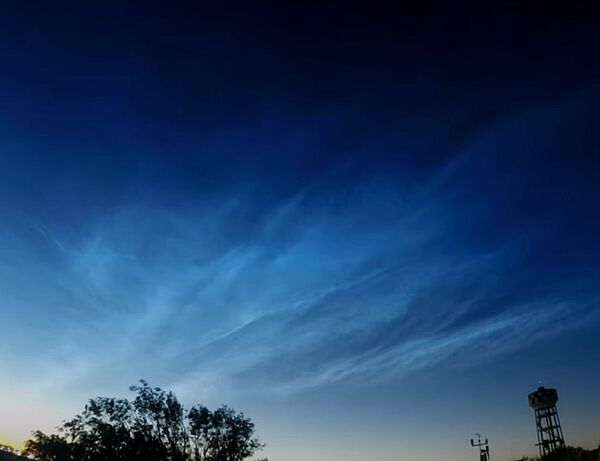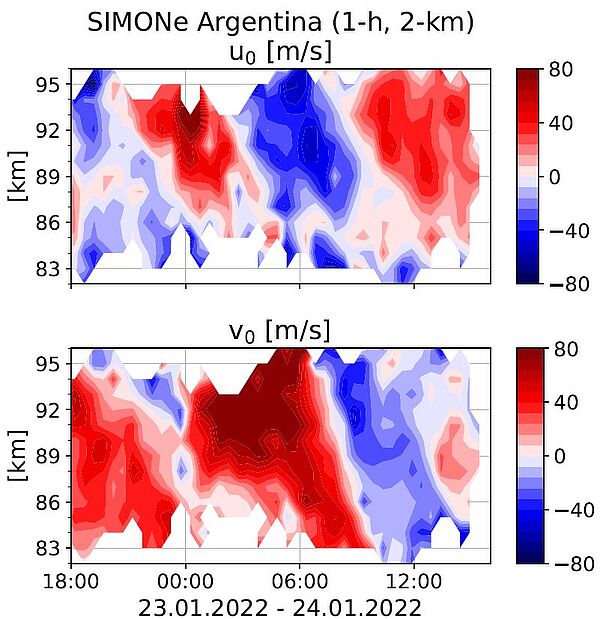Noctilucent clouds over Patagonia
Unexpected observations with the IAP camera network
Kühlungsborn, 24 Jan 2022
It was big surprise on January 24th in Patagonia (southern Argentina). The skies over Rio Gallegos were filled with noctilucent clouds (NLCs). This is usually a very unlikely observation for the southern summer season at 52°S in January. Lowest temperatures of the Antarctic summer mesopause region usually occur earlier during the season, said Dr. Gerd Baumgarten, principal investigator (PI) of IAP's world-wide camera network for such observations. But this year there must have been special conditions which led to the formation of ice crystals at 85 km height. Possibly the volcano eruption of Hunga Tonga on January 15th played a role, Dr. Baumgarten hypothesizes – however, this has to be studied further.
Another hint comes from SIMONe-Argentina – the IAP meteor radar network which includes stations in southern Argentina. Actually, the observational period is characterized with strong southerly wind, says the SIMONe PI Dr. Fede Conte. The wind could have advected ice crystals formed further south, i.e., over Antarctica – being another aspect for the analysis of NLC observations.
The spatial extent as well as the horizontal structure of NLCs at continental and smaller scales is observed with a combination of cameras in Europe and America. The IAP has developed an automated system of high-resolution digital cameras. The images are sent in nearly real-time to IAP and are archived here. The data are publicly available in nearly real-time and are analyzed regularly by citizen scientists who share their findings with us. We would like to thank the enthusiastic observers of NLCs (e.g. at AKM e.V. Forum/Leuchtende Nachtwolken ), and our hosts in Patagonia.
SIMONe (Spread spectrum Interferometric Multistatic meteor radar Observing Network) is a research activity led by the Radar Remote Sensing Department at IAP, in close cooperation with the Arctic University in Norway and the MIT Haystack Observatory. Operations and research at different SIMONe systems are realized in cooperation with local Universities and Institutes. Technical developments and research related to SIMONe are being partially funded by the Deutsche Forschungsgemeinschaft (DFG, German Research Foundation) under SPP 1788 (DynamicEarth)-CH1482/2-1 and under SPP 1788 (CoSIP)-CH1482/3-1. Installations and first observations of SIMONe-Argentina are described in Conte et al. (2021). Current data are available from the IAP webpages.
The Leibniz-Institute of Atmospheric Physics is one of the German main centers for Middle Atmosphere research and The Leibniz-Institute is one of the German main centers for Middle Atmosphere research and maintains active cooperations with several international research organizations. The institute is located near the Baltic Sea resort Kühlungsborn, owns a separate site on the island Rügen, and is a major partner of the ALOMAR observatory in northern Norway. As associated institute of the Rostock University it is part of the teaching programme in physics. A total of about 90 persons is employed at IAP. The institute realizes an equal-opportunity and family-friendly human resource policy and is certified with the audit "berufundfamilie" ('career and family').














